
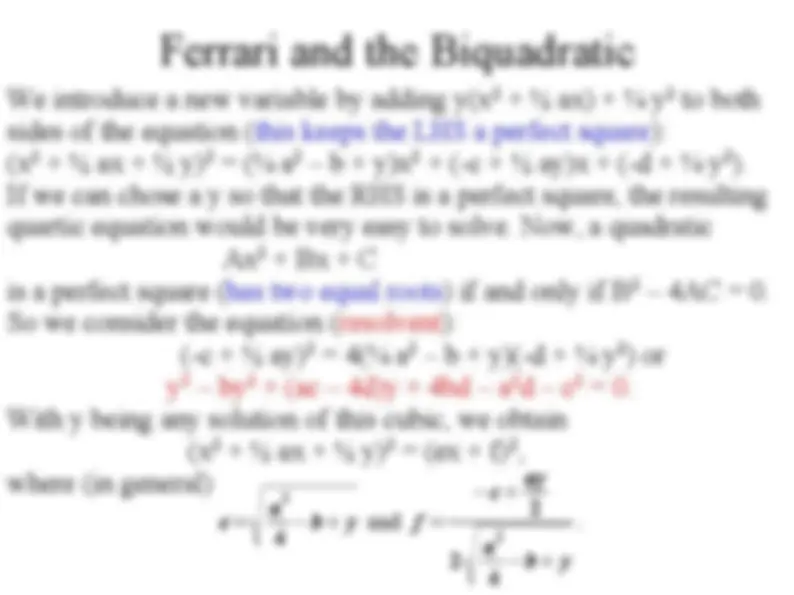
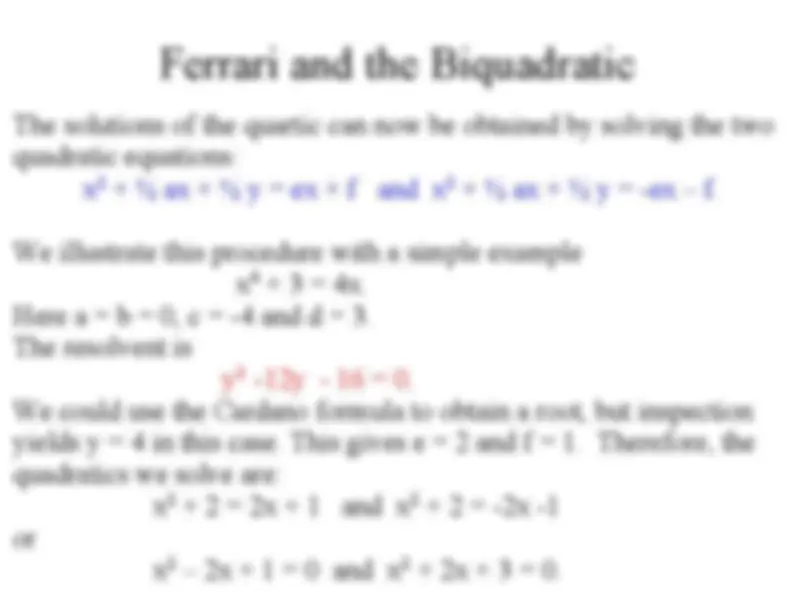
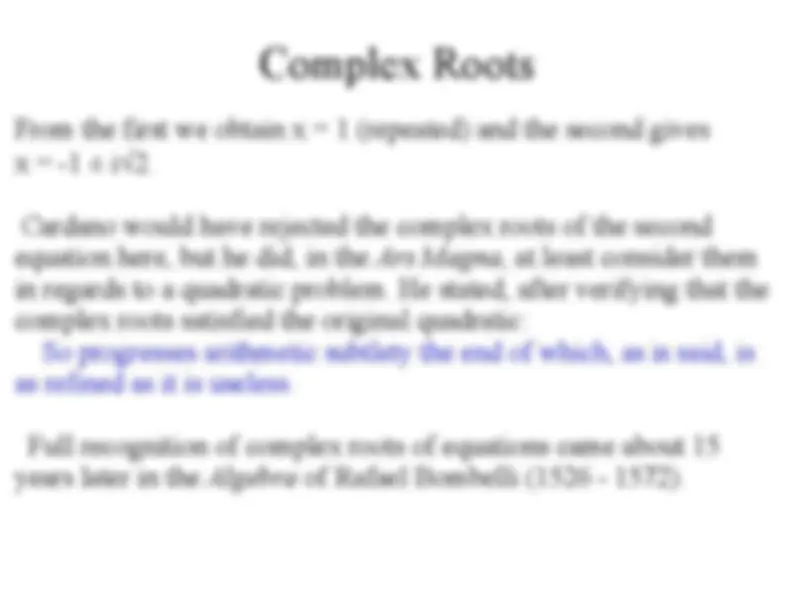
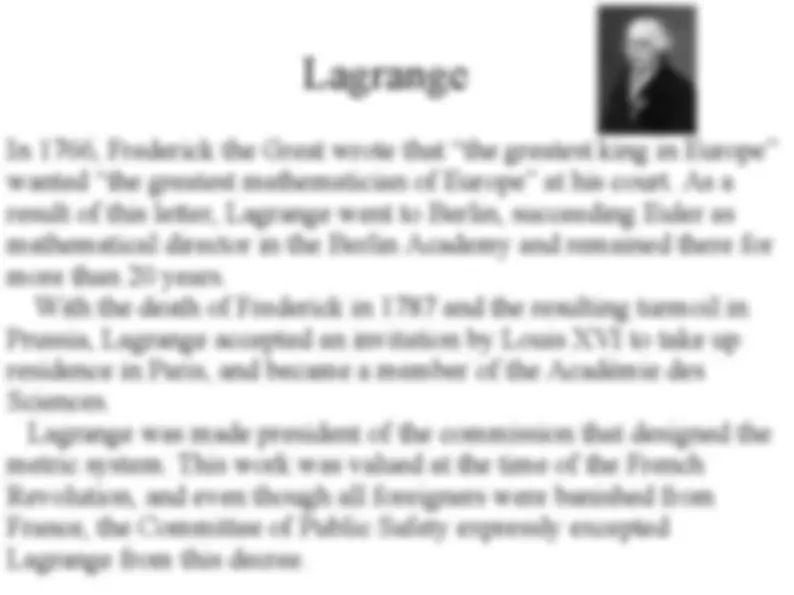
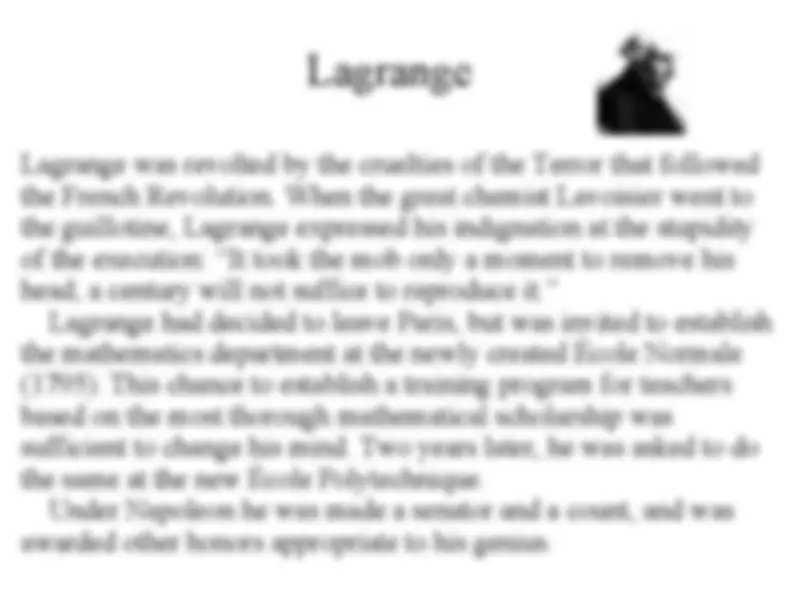
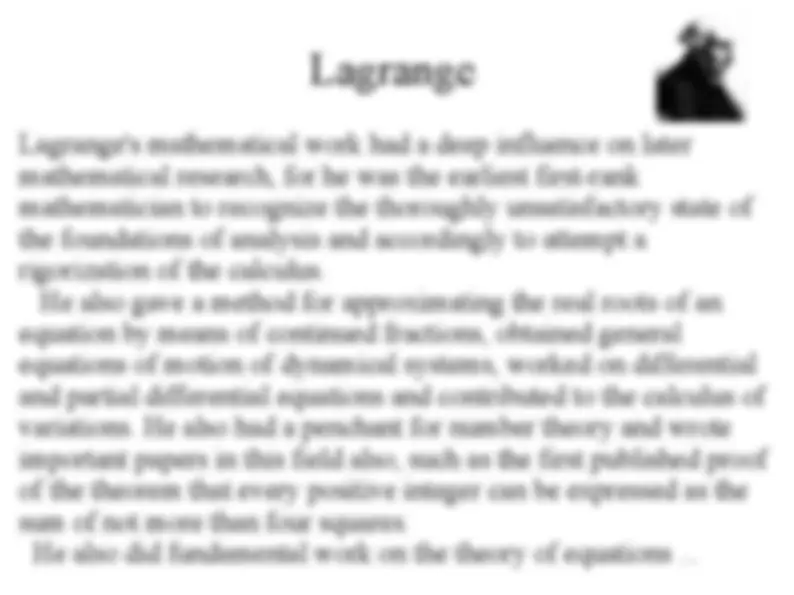
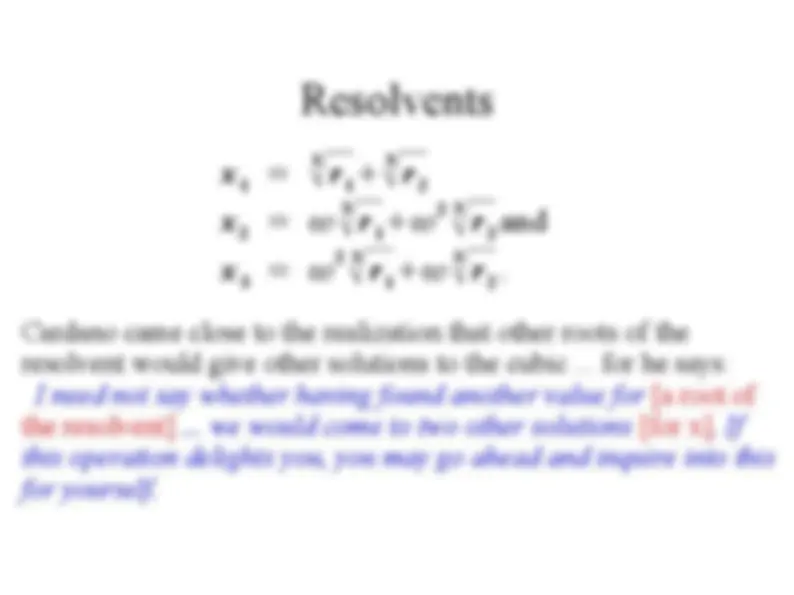
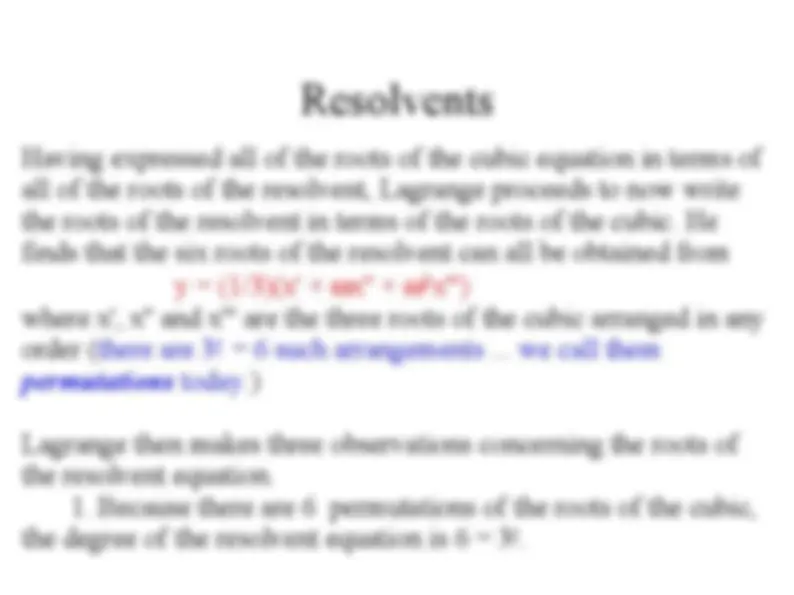
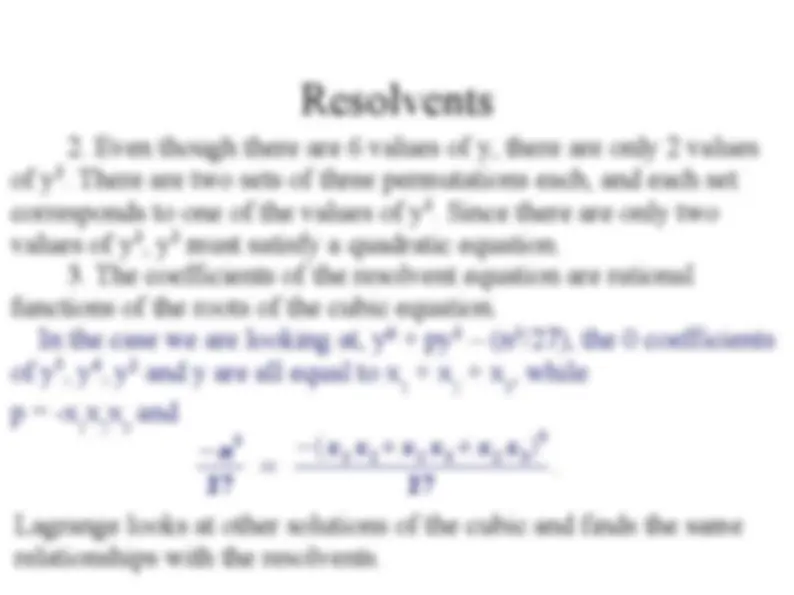
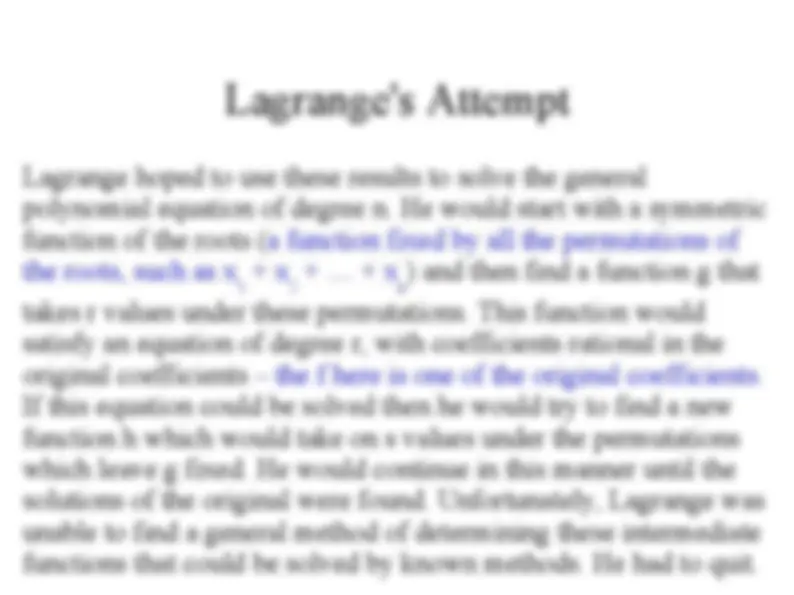
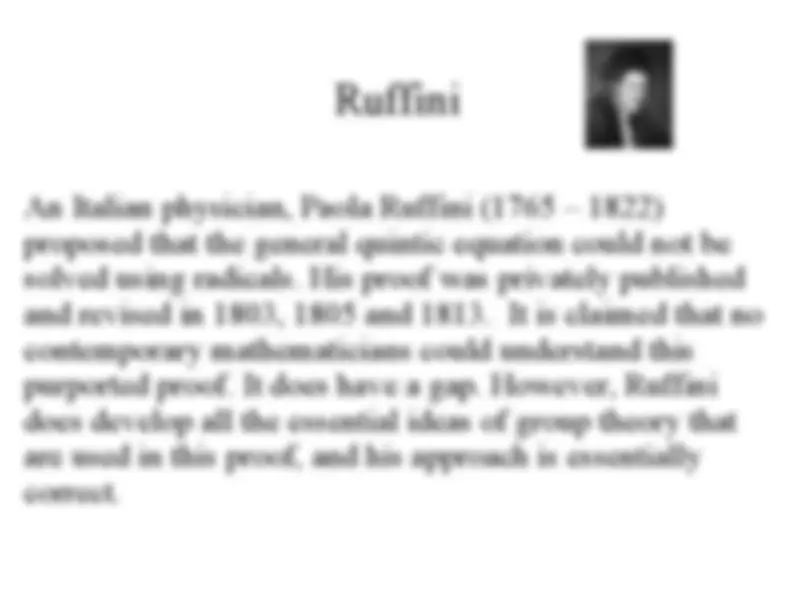
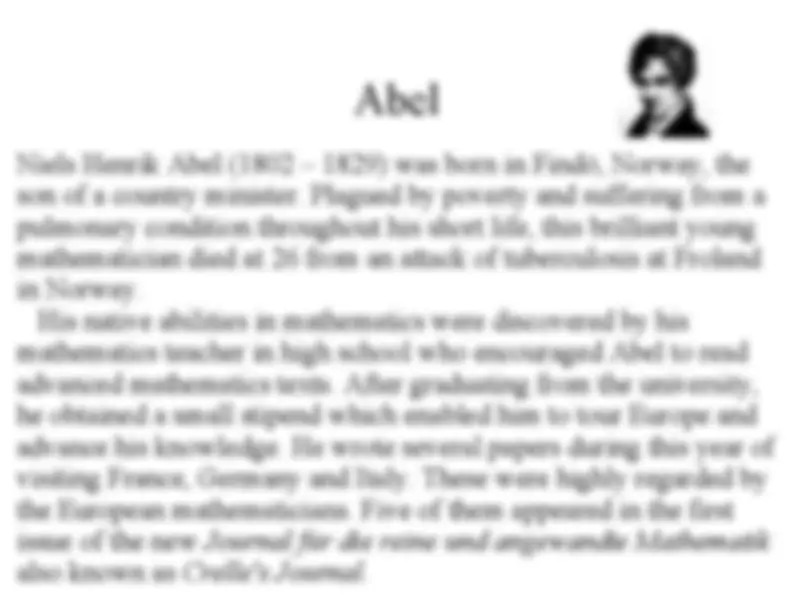
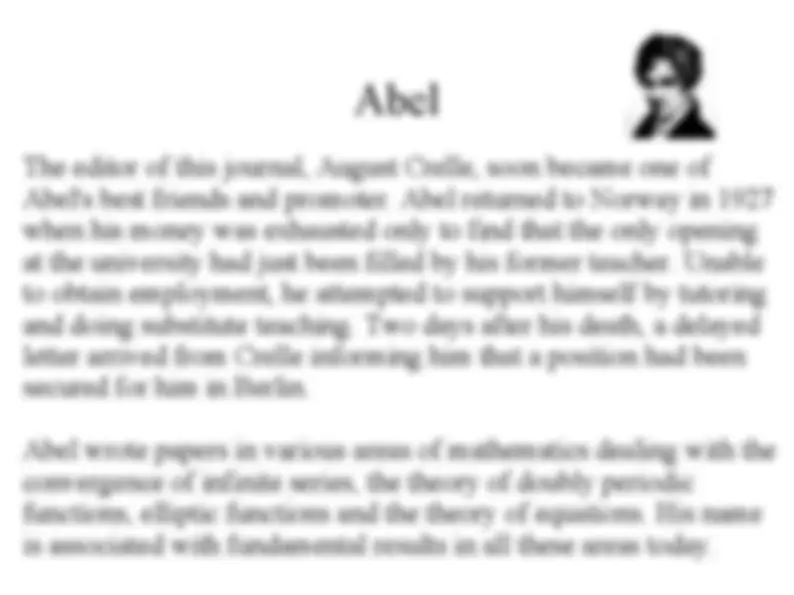
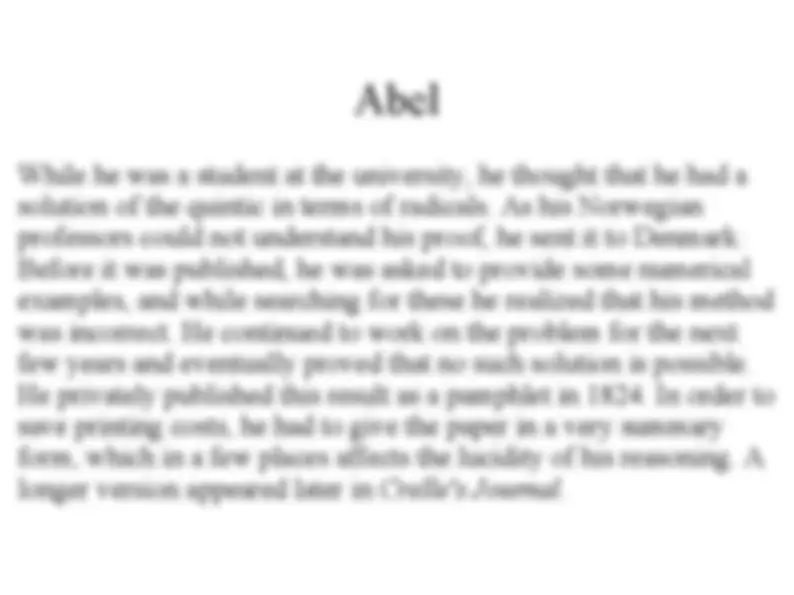
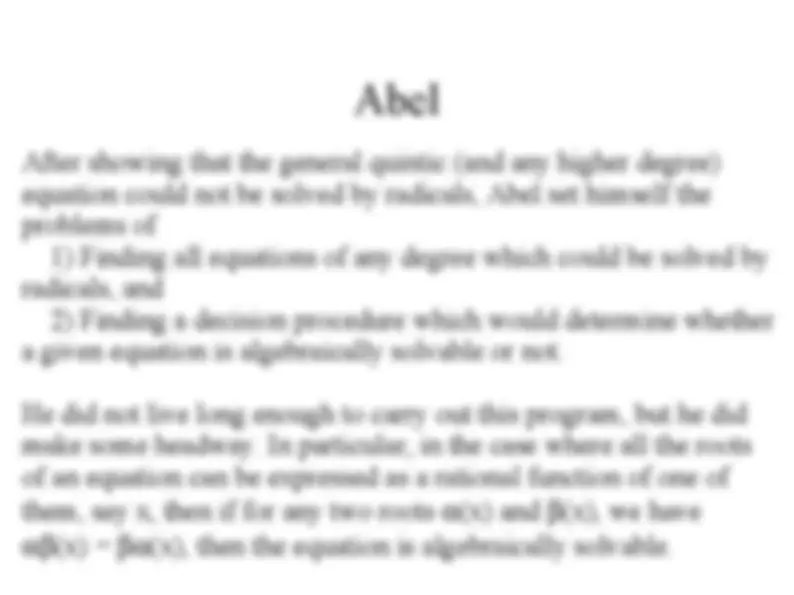
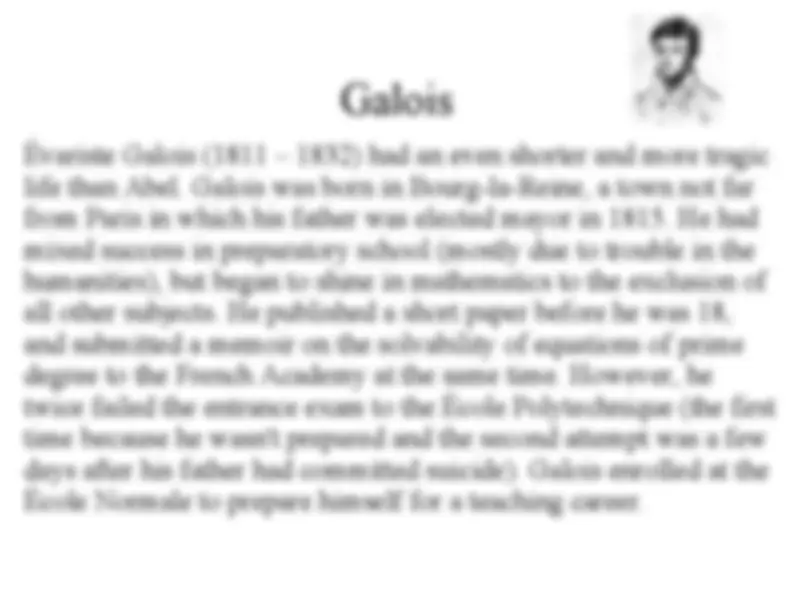
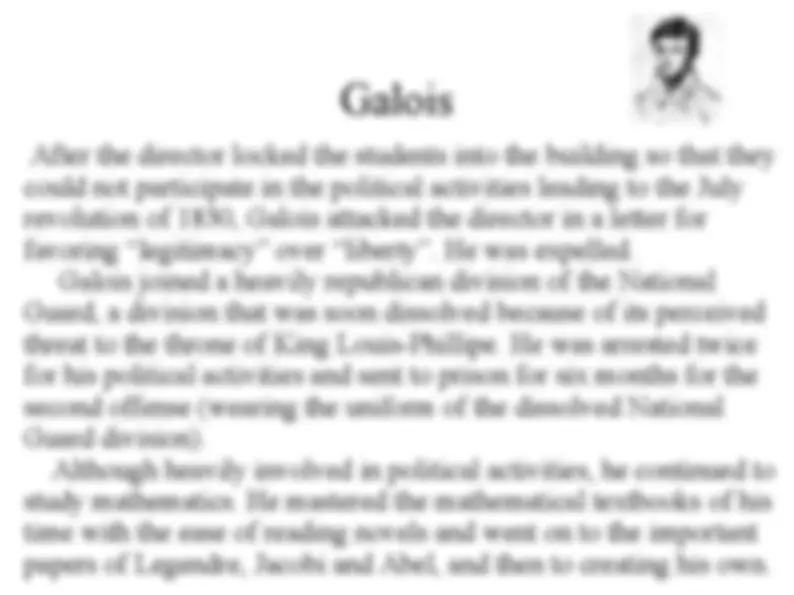
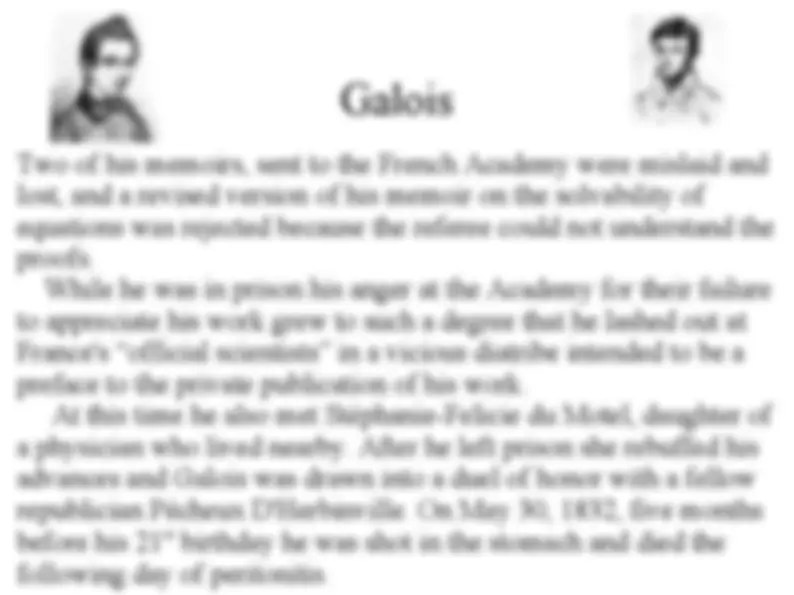
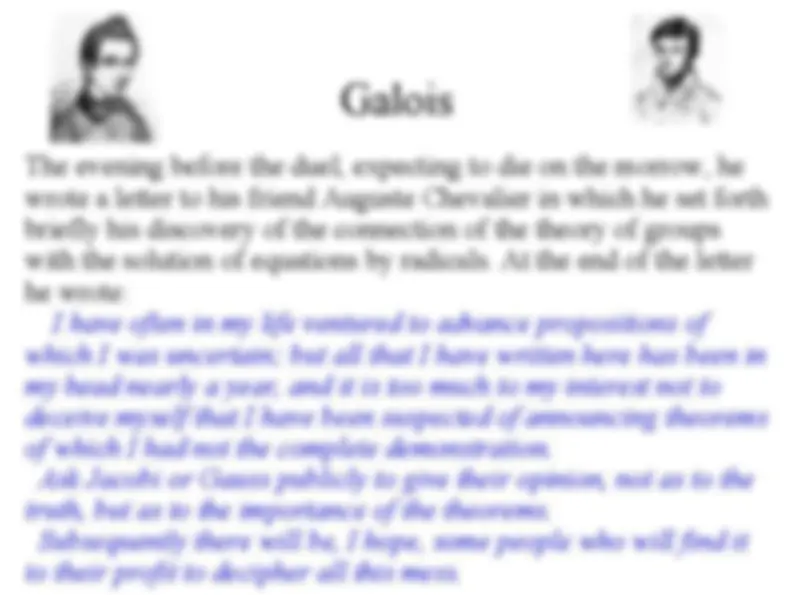
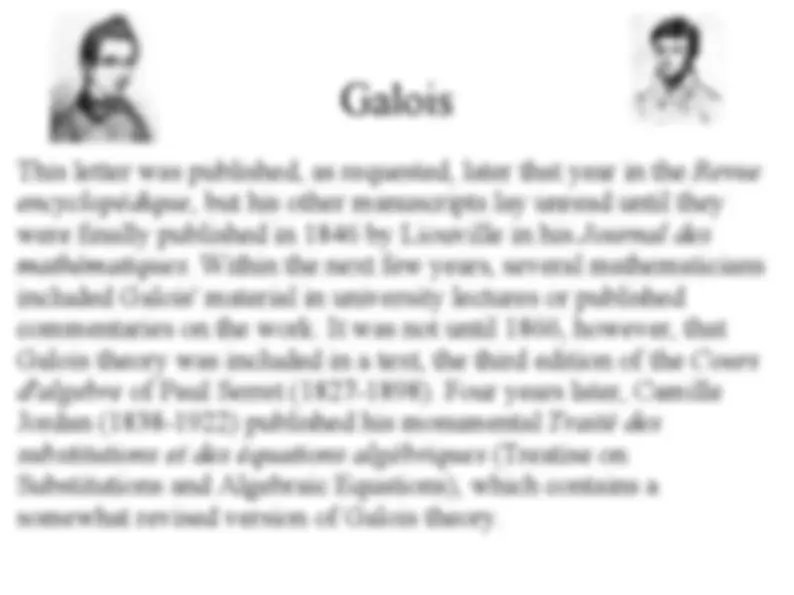
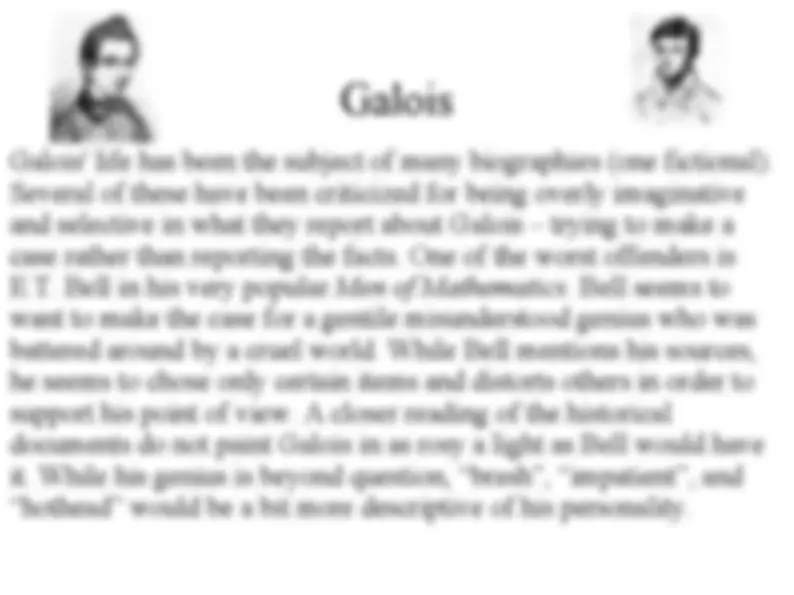


Study with the several resources on Docsity

Earn points by helping other students or get them with a premium plan


Prepare for your exams
Study with the several resources on Docsity

Earn points to download
Earn points by helping other students or get them with a premium plan
Community
Ask the community for help and clear up your study doubts
Discover the best universities in your country according to Docsity users
Free resources
Download our free guides on studying techniques, anxiety management strategies, and thesis advice from Docsity tutors
Lagrange's work on solving polynomial equations, specifically his investigation of cubic equations and the use of resolvents in their solutions. It also touches upon his attempts to extend these methods to higher degree equations.
What you will learn
Typology: Study Guides, Projects, Research
1 / 29

This page cannot be seen from the preview
Don't miss anything!






















Ferrari and the Biquadratic Ferrari's solution of the quartic (biquadratic) equation involved the introduction of a new variable and then specializing this variable to put the equation into a form that could easily be solved. Finding the right specialization involved solving a cubic equation (called the resolvent of the original quartic). Here are the details, again using modern techniques. Consider the general quartic equation x 4
Ferrari and the Biquadratic The solutions of the quartic can now be obtained by solving the two quadratic equations: x 2
Complex Roots From the first we obtain x = 1 (repeated) and the second gives x = -1 ± i√2. Cardano would have rejected the complex roots of the second equation here, but he did, in the Ars Magna , at least consider them in regards to a quadratic problem. He stated, after verifying that the complex roots satisfied the original quadratic: So progresses arithmetic subtlety the end of which, as is said, is as refined as it is useless. Full recognition of complex roots of equations came about 15 years later in the Algebra of Rafael Bombelli (1526 - 1572).
Lagrange The two greatest mathematicians of the 18 th Century were Euler and Lagrange, and which of the two was the greater is a matter of debate that often reflects the differing mathematical sensitivities of the debaters. - Eves, An Introduction to the History of Mathematics Joseph Louis, Comte Lagrange (1736 – 1813) was born in Turin. He was Italian by birth, German by adoption, and Parisian by choice. He began his teaching as professor of mathematics in the artillery school at Turin (1755) when he was only nineteen. He was not one of the infant prodigies in mathematics, and showed no interest in mathematics until he was seventeen; but within a few years he was recognized as the greatest living scholar in his science.
Lagrange In 1766, Frederick the Great wrote that “the greatest king in Europe” wanted “the greatest mathematician of Europe” at his court. As a result of this letter, Lagrange went to Berlin, succeeding Euler as mathematical director in the Berlin Academy and remained there for more than 20 years. With the death of Frederick in 1787 and the resulting turmoil in Prussia, Lagrange accepted an invitation by Louis XVI to take up residence in Paris, and became a member of the Académie des Sciences. Lagrange was made president of the commission that designed the metric system. This work was valued at the time of the French Revolution, and even though all foreigners were banished from France, the Committee of Public Safety expressly excepted Lagrange from this decree.
Lagrange Lagrange's mathematical work had a deep influence on later mathematical research, for he was the earliest first-rank mathematician to recognize the thoroughly unsatisfactory state of the foundations of analysis and accordingly to attempt a rigorization of the calculus. He also gave a method for approximating the real roots of an equation by means of continued fractions, obtained general equations of motion of dynamical systems, worked on differential and partial differential equations and contributed to the calculus of variations. He also had a penchant for number theory and wrote important papers in this field also, such as the first published proof of the theorem that every positive integer can be expressed as the sum of not more than four squares. He also did fundamental work on the theory of equations ...
Resolvents Lagrange carried out a detailed investigation of all the various solutions of cubic and quartic equations in order to discover techniques that would work for quintic and higher degree equations. In particular, he was interested in determining the relationship between the original equations and the resolvents that were used in their solutions. Starting with the cubic equation x 3
Resolvents
1
3 r 1 ^ 3 r 2
2
3 r 1 2 3 r 2 and
3
2 3 r 1 ^ 3 r 2. Cardano came close to the realization that other roots of the resolvent would give other solutions to the cubic ... for he says: I need not say whether having found another value for [a root of the resolvent] ... we would come to two other solutions [for x]. If this operation delights you, you may go ahead and inquire into this for yourself.
Resolvents Having expressed all of the roots of the cubic equation in terms of all of the roots of the resolvent, Lagrange proceeds to now write the roots of the resolvent in terms of the roots of the cubic. He finds that the six roots of the resolvent can all be obtained from y = (1/3)(x' + ωx'' + ω 2 x''') where x', x'' and x''' are the three roots of the cubic arranged in any order (there are 3! = 6 such arrangements ... we call them permutations today.) Lagrange then makes three observations concerning the roots of the resolvent equation.
Quartic Resolvents Lagrange next looks at Ferrari's solution of the quartic. The roots of the resolvent in this case look like, y = ½ (x'x'' + x'''x'''') where the x's are the four roots of the quartic in any of the 4!= 24 possible arrangements. This time, however, there are only three distinct values of the y's. Thus, the resolvent has degree 3 and its coefficients are again rational functions of the roots of the quartic. Lagrange is now ready to tackle the general problem. He was going to look for a resolvent of degree k (< n, the degree of the equation to be solved) whose roots would be certain functions of the roots of the original equation, functions that take on only k values when the roots of the original equation are permuted in n! ways.
Lagrange's Attempt In his search for such functions he did prove that the degree of the resolvent he sought would be a divisor of n! (but he could not show that it was less than n!). Furthermore, he proved that if all the permutations of the roots which leave some function f fixed also leave another function g fixed, then g can be expressed as a rational function of f together with the coefficients of the original equation. Furthermore, if g is not fixed by the permutations which fix f, but is changed to one of a set of r different functions, then g will be a root of an equation of degree r whose coefficients are rational functions of f and the coefficients of the original equation.
Ruffini
Abel Niels Henrik Abel (1802 – 1829) was born in Findö, Norway, the son of a country minister. Plagued by poverty and suffering from a pulmonary condition throughout his short life, this brilliant young mathematician died at 26 from an attack of tuberculosis at Froland in Norway. His native abilities in mathematics were discovered by his mathematics teacher in high school who encouraged Abel to read advanced mathematics texts. After graduating from the university, he obtained a small stipend which enabled him to tour Europe and advance his knowledge. He wrote several papers during this year of visiting France, Germany and Italy. These were highly regarded by the European mathematicians. Five of them appeared in the first issue of the new Journal für die reine und angewandte Mathematik also known as Crelle's Journal.